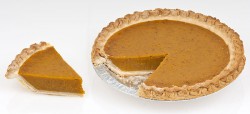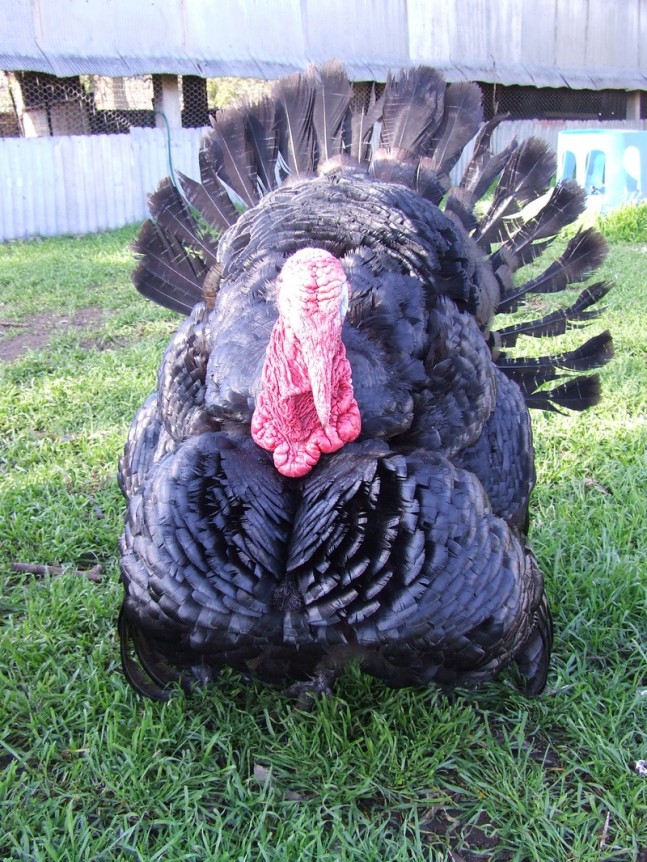Chatting with my American friend yesterday on the ritual of Thanksgiving, I asked her if Goose was ever on the menu for Thanksgiving. She looked at me in bemusement, “Oh no, that’s very English, we don’t do Goose”. Curious I thought, given Thanksgiving is rooted in English tradition and Henry VIII, a man who sure knew how to celebrate – marriages and redefining the Church – would be perplexed at this denial of ancestry.

Vintage Thanksgiving
Even though I’m not American, I can see the merits (logic) in remembrance and celebration of the Pilgrim’s and what is thought to be the first Thanksgiving, ‘The 1621 Plymouth Feast’, celebrating a good harvest. It is fascinating, if not profoundly thought-provoking what these folks endured and the epic voyage of the Mayflower. It is however perhaps lost on most, that these early settlers endured unspeakable hardships and a feast to celebrate a good harvest in those days was a milestone, rather than religious ceremony.
Did they eat Turkey at the Plymouth Feast? Quite possible, given that the Wild Turkey is a native Galliforme of North America; ‘Meleagris gallopavo – has 5 distinct subspecies (Eastern, Rio Grande, Florida a.k.a. Osceola, Merriams, and Goulds)* This does add to speculation that the first Thanksgiving dinner was in actually in Texas, or perhaps first Turkey served up in celebratory manner as there is fossil evidence that the Rio Grande subspecies was related to the first Galliforme to roam this planet, known as Pedioecetes lentus and found in Austin Chalk near Fort McKinney, Texas.*
Still, our Pilgrims Feast is significant and who knows, the native Indian, Wampanoag, who taught these Plymouth settlers how to hunt fowl may well have known his Turkey from his Pheasant. A thought just popped into my head, being a New Zealander, the indigenous native ‘Maori’ had a Turkey (of sorts) of their own to feast on, called a Moa only it was 12 feet high and weighed 500lb; imagine trying to fit that in an oven!

Pumpkin Pie
So, as you grapple with that large bird in preparation for the feast, here is my advice (see below) on how to cook a Turkey New Zealand style (yes, with my roots in England). As for the pumpkin pie, my American friend Stacy cooks the best I have ever tasted and she swears by (worships) Mark Bittman, so here is a link to his latest recipe No more cans! Make Bittman’s pumpkin pie from scratch
And what wine should you be drinking with that Thanksgiving Turkey – American wine of course and you can do no better than best pinot noir in the whole United States, Calera Vineyard, and celebrate that American vinous legend, Josh Jensen – read more about Calera on the Wandering Palate click here – also www.calerawine.com
Happy Thanksgiving Day – God Bless America!
The Wandering Palate
*source Wikipedia

Now that’s what I call a handsome Turkey
Roasting your Turkey
Apart from defrosting or a freshly chilled turkey, it is imperative to bring the bird up to room temperature before cooking, which will take a good 4 to 5 hours, depending on the size of the turkey.
This generally means leaving it out of the fridge overnight, to which I would leave the air-conditioning on in the kitchen if you are in the tropics, unless you are happy to get up at three in the morning to take it out of the fridge!
All this hard-yakka can of course be used to embellish you cooking talents and gargantuan efforts on the day and if I could suggest chaps, get in the kitchen as this is a good chance to earn some serious browning points.
Personally I feel stuffing the turkey is essential, although there is a theory that this makes it more difficult to cook through. In twenty years of stuffing/cooking turkeys I have never encountered any such problem. More importantly, people have always commented on “how damn good” the stuffing is.
I use sourdough bread (buzzed in the food processor), chopped shallot onions (sautéed soft in butter), truffle paste, chanterelle mushrooms, garlic, fresh sage and thyme and seasoning, all bound with egg. You can use fresh truffles if you like; although not an inexpensive exercise however I find black or white truffle pastes, sometimes combined with mushroom as a type of pâté, does a wonderful job.
If you cannot source fresh chenterelles, dried ones are usually readily available, or you can use dried morels or assorted dried wild-mushrooms. Dried mushrooms need to be soaked in warm water for 15 minutes before adding to the stuffing mix.
Equipment:
- Large metal oven roasting dish
- Metal rack for placing the turkey on
- Separate oven and meat temperature gauges
- Baking foil/Aluminium foil – preferably wide commercial size
- Kitchen paper towel
- Large mixing bowl for stuffing
- Large while platter for presenting the bird at the table
Ingredients:
- 4kg Turkey (up to 8 people) 6kg Turkey (up to 12 people)
- Butter or Olive Oil
- Water
- Salt and Pepper
- Garlic (half a head, that is several cloves)
- Fresh sage (bunch)
- Fresh thyme (half dozen sprigs)
- Lemons (1 large, chopped in half)
- Truffle oil (for sauce)
Ingredients for Stuffing
- Bread for stuffing (preferably sour dough)
- Two large shallot onions
- Salt and Pepper
- Truffle paste (small jar)
- Fresh Chenterelle mushrooms, or dried morels/wild mushrooms
- Fresh sage (use from ingredients for turkey)
- Garlic (chopped fine)
- 2 eggs (free range – from Huber’s)
Preparation: Plan and start well ahead! Cooking time for a 4kgs bird will be over 3 half hours including resting of the meat.
You might want to consider half cooking your roast vegetables the night before, then reheating and crisping in a hot oven whilst the turkey is resting.
Pre-heat oven to 200 degrees Celsius
Making the stuffing:
- Either break up the sourdough bread to tiny pieces by hand or buzz in the food processor.
- Soak dried mushrooms and drain, or wash and drain the fresh chanterelles, chop coarsely
- Chop shallots finely and sauté very gently in butter, do not brown.
- Peel garlic, leave some whole and crush with the back of knife for placing in Turkey cavity. Chop remaining finely for stuffing.
- Rinse sage and pat dry. Chop half the sage finely retaining the rest whole for placing inside turkey cavity.
- Combine all the ingredients in a bowl, with several grinds from the pepper mill and two good pinches of Maldon sea salt. Bind with egg and ensuring truffle paste evenly distributed – best way is use your hands.
Preparing the bird – make sure it’s properly thawed and at room temperature
- Wipe turkey inside and out with kitchen paper, removing giblets and neck (these should be placed in the bottom of roasting dish to add flavour to your sauce), season with pepper and salt well, rubbing inside and out. Place bird in roasting dish.
- Rub the bird with cut lemon, again inside and out. Place whole garlic, thyme and sage sprigs in cavity.
- Stuff the bird but loosely, as the stuffing will swell. Use the crust from the sourdough bread to seal cavity, or any bread crust will do. You can use baking twin to tie legs together to help close the cavity.
- Rub the bird liberally with butter (you can use olive oil, although butter achieves a more flavoursome result), messy job but hands necessary. At the same time butter a double-sheet of foil, again very generous with the butter (on one side) and make sure the foil is large enough cover whole roasting dish.
- Pour a cup or two of water in roasting dish and then turn the bird upside down, breast down, making sure you are using a metal rack to lift of the bottom of the roasting dish so heat can circulate. Cover the bird and dish with the cooking foil, butter side down!
Cooking the turkey and tips:
- General cooking time is 20 minutes per 500 g, approximately 2 hours 40 minutes for a 4 kgs bird.
- For the first 40 minutes cook at 200 degrees Celsius which seals in the flavours, then lower temperature to 160 degrees for remainder of cooking time.
- Here’s where you can be a little adventurous, time permitting. I much prefer to slow roast practically everything, and in my convection/fan oven this means turning the heat way down to less than 50 degrees on the dial, which translates to an oven temperature ideally around 90 to 100 degrees Celsius (remember, rely on a separate oven temperature gauge than the dial). I don’t really calculate the extra cooking time rather relying on my meat temperature gauge inserted in the thickest part of the breast and leg. Poultry is considered cooked at around 80 or 90 degrees Celsius, thus the logic of slow cooking and not cooking at higher temperature to avoid drying out the meat.
- The turkey needs to be basted every 20 minutes, using the juices and fat flowing from the bird as it cooks. I also maintain a small amount of water in the bottom of the roasting dish to keep the moisture level up.
- Half way through cooking, turn the bird over leaving breast side up for the remainder. The reason for placing the bird breast down initially is this allows the juices from the legs to run in to the breast meat, which tends to dry out easier.
- Remove the foil for the last 30 minutes of cooking so the bird browns nicely, at the same time not adding any more water to the pan so it reduces to a thicker stock, but watch that it doesn’t dry out completely and burn.
- Remove bird from the roasting dish and place on a large white platter to rest, covering loosely with cooking foil. 30 minutes is feasibly sufficient resting time however I like to give my turkey a good hour of resting. Also be sure to retain juices that will release from the resting for your sauce.
- Deglaze the roasting pan over stove element with a glass of chardonnay (also see wine pairing), adding a cup of organic chicken stock and a teaspoon of truffle oil, along with juices from resting. Reduce until sufficiently thickened or use a roux to thicken the sauce more to your own texture and taste.
- Meanwhile, place your par-cooked vegetables in the oven to finish roasting a crisp. My wife actually achieves a better result crisping par-boiled potatoes in a frying pan. Equally, a friend of mine has perfected his technique, preferring to half boil the potatoes first, then drain and rough up by shaking the pot vigorously. This sort of fluffs them up and when roasted in the oven at high heat become wonderfully crisp on the outside.
Summary
Well your probably exhausted reading through this by now and have picked up the phone to order your pre-roasted turkey from your local providore, which is certainly a convenient option.
However, I love the ooooh’s and aaaah’s and applause when I appear out of the kitchen with an impressive, golden brown turkey and plonk it in the middle of the table. Which reminds me, always carve at the table, otherwise you will lose the spectacle altogether.
|
|
Tweet |



No comments to Happy Thanksgiving Day – “Thanksgiving and Praise to our beneficent Father who dwelleth in the Heavens” Abraham Lincoln | Comments Feed
No comments yet
The comments are closed.